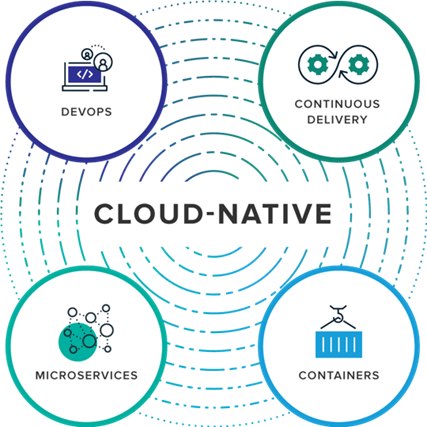
What is Cloud Native?
What is Cloud Native?
Cloud Native is a software development and delivery methodology designed to maximize the advantages of cloud computing while enhancing application reliability, scalability, and agility in cloud environments. By addressing the limitations of traditional application development—such as rigidity, poor portability, and inefficiency—cloud native empowers organizations to rapidly respond to business demands, improve application performance, and deliver high-quality services at scale.
The Evolution of Cloud Native
The concept of cloud native emerged in 2010 when Paul Fremantle first coined the term in a blog, advocating for standards tailored to cloud computing’s unique characteristics. In 2015, Matt Stine of Pivotal further defined cloud native in his booklet, Migrating to Cloud Native Application Architecture, outlining key principles like 12-factor applications, microservices architecture, self-service agility, API-driven collaboration, and anti-fragility. Pivotal later expanded these ideas into the Pivotal 15 Factors, incorporating API-first design, telemetry, and authentication/authorization. Today, Pivotal distills cloud native into four core pillars: DevOps, Continuous Delivery, Microservices, and Container.

Concurrent with Pivotal’s efforts, other industry leaders advanced cloud native principles. In 2015, Google founded the Cloud Native Computing Foundation (CNCF) to standardize and democratize cloud native technologies. Kubernetes, CNCF’s first open-source project, quickly became the de facto "operating system" of cloud native, enabling seamless orchestration of containerized applications. CNCF now officially defines cloud native as:
Cloud-native technologies empower organizations to build and run scalable applications in modern, dynamic environments such as public, private, and hybrid clouds. Containers, service meshes, microservices, immutable infrastructure, and declarative APIs exemplify this approach.
At its essence, cloud native is a fusion of "cloud" (the foundational infrastructure) and "native" (designing applications specifically for the cloud). This requires rethinking architectural patterns, development workflows, organizational structures, and cultural norms to fully leverage cloud computing’s potential. It represents a holistic transformation—from development to deployment—that ensures applications are optimized to run efficiently and securely in cloud environments.
Core Technologies of Cloud Native
Cloud native is underpinned by a dynamic ecosystem of technologies, as visualized in CNCF’s real-time technology map. While the landscape evolves rapidly, the most critical components include:
1. Containerization (e.g., Docker, OCI)
Lightweight, portable containers package applications with their dependencies, ensuring consistency across environments.
2. Orchestration (e.g., Kubernetes, Helm)
Tools like Kubernetes automate container deployment, scaling, and management, enabling seamless application orchestration.
3. Microservices Architecture
Applications are decomposed into small, independent services that communicate via APIs, enhancing modularity and scalability.
4. Service Meshes (e.g., Istio, Linkerd)
These provide dedicated infrastructure for service-to-service communication, improving reliability and security.
5. DevOps & CI/CD (e.g., Tekton, Jenkins)
Practices like continuous integration (CI) and continuous delivery (CD) automate software testing and deployment, accelerating release cycles.
6. Immutable Infrastructure
Servers or containers are treated as disposable, updated only through replacement rather than in-place changes, reducing configuration drift.
7. Declarative APIs
APIs define desired system states, allowing infrastructure to be provisioned and managed predictably.
These technologies, combined with cultural shifts toward collaboration and automation, form the backbone of cloud native, enabling organizations to build and scale applications with unmatched speed and resilience.
Conclusion
Cloud native represents a paradigm shift in software engineering, enabling organizations to harness the full potential of cloud computing. By embracing microservices, containers, DevOps, and other cloud native technologies, businesses can deliver applications that are scalable, resilient, and adaptable to evolving market demands. As cloud adoption continues to grow, cloud native is no longer a niche approach—it is the standard for modern application development, ensuring organizations stay competitive in a fast-paced digital world.


